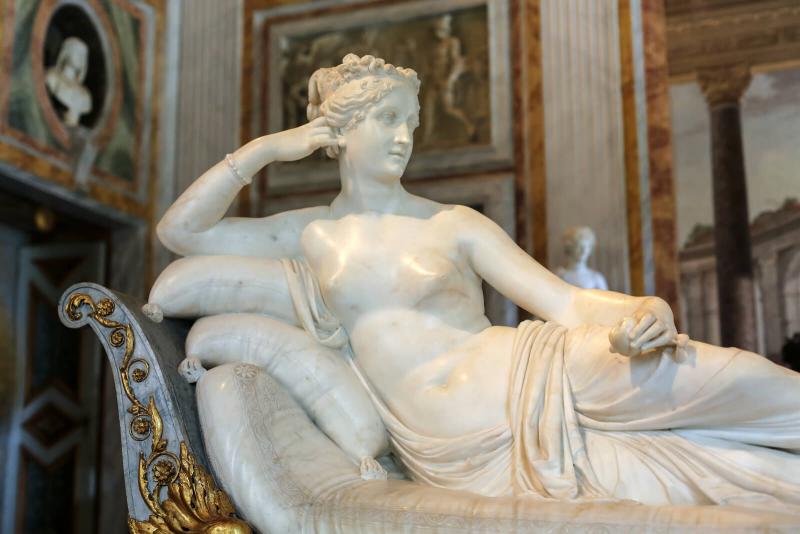With paintings by Caravaggio, Raphael, and Titian, and sculptures by Bernini and Canova, among others, the Borghese Gallery in Rome houses one of the city’s greatest art collections.
Cardinal Scipione Borghese (1579–1633), a member of the powerful Borghese family and the nephew of Pope Paul V, is the man who gave birth to the museum’s collection. At first, it was housed in the cardinal's residence near St. Peter's; in the 1620s, it was transferred to Scipione’s new villa suburbana, a party villa just outside Porta Pinciana (these Romans knew how to live, didn’t they?).
The collection is housed in the villa's central building, the Casino Borghese. It is spread over 20 rooms on two floors: the ground-floor gallery features sculptures, Roman floor mosaics and frescoes, while the upstairs floor is a picture gallery.
Sala I, known as Sala della Paolina, houses one of the most famous sculptures of the Borghese collection: the neo-classical life-size portrait of Paolina Borghese Bonaparte, Napoleon's sister, reclining topless as Venus Victrix (1805-1808), a masterpiece by Antonio Canova.
Other highlights include Gian Lorenzo Bernini’s Rape of Proserpine (1621–22, Sala IV), Apollo and Daphne (1622–25, Sala III) and David (1623), considered seminal works of Baroque sculpture.
Sala VIII on the ground floor is a favorite for the number of Caravaggio paintings, which Scipione collected enthusiastically. Famous paintings here include Young Sick Bacchus (1592–95), an early self-portrait; Boy with a Basket of Fruit (1593–95); David with the Head of Goliath (1609–10), where Goliath's severed head is said to be a self-portrait; Madonna with Serpent (1605–06), where Mary teaches young Jesus how to crush the serpent, symbol of sin and heresy; and St. John the Baptist (1609–10), possibly Caravaggio's last work.
(Take note if you're in the Los Angeles area: the J. Paul Getty Museum in Los Angeles will host an exhibition featuring, for the first time, three Caravaggio paintings from the Gallery's collection: Saint Jerome Writing, Boy With a Basket of Fruit and David With the Head of Goliath; opening November 21.)
The Pinacoteca upstairs features beautiful Renaissance-era paintings, such as Raphael's early works The Deposition (1507, Sala IX) and Lady with a Unicorn (1506), Perugino's Madonna and Child (first quarter of the 16th century), and Titian’s early masterpiece, Sacred and Profane Love, painted in 1514 (fun fact: in 1899, the Rothschilds' offer to buy the painting from the gallery for 4 million lire - more than the value of the whole Galleria Borghese building and collections, then valued at 3.6 million lire - was refused).
*Travel tip: Reservations are required in order to visit the Borghese Gallery in Rome. Book in advance!
For guided tours in Rome, click here.











